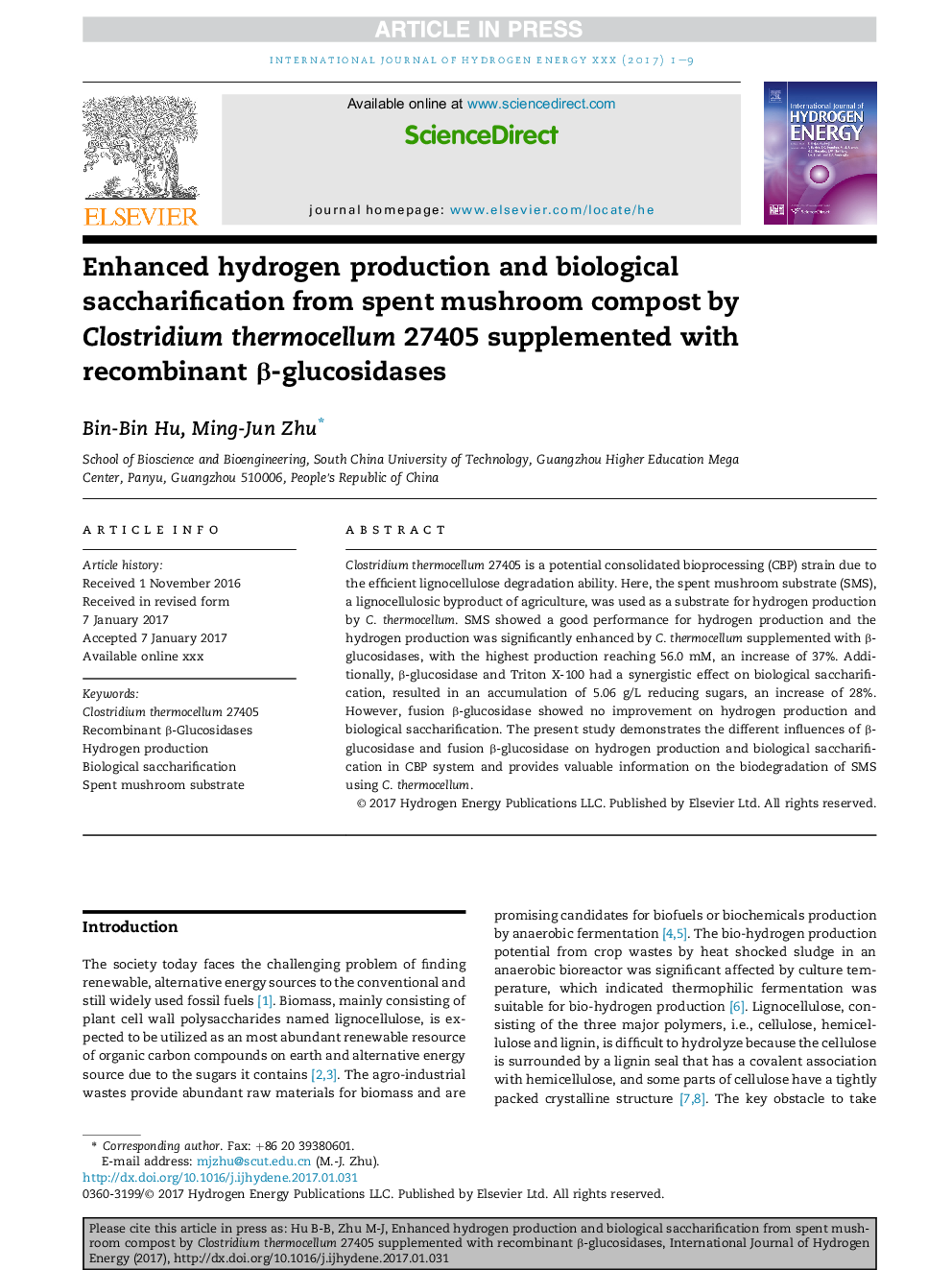| Article ID | Journal | Published Year | Pages | File Type |
|---|---|---|---|---|
| 5148276 | International Journal of Hydrogen Energy | 2017 | 9 Pages |
Abstract
Clostridium thermocellum 27405 is a potential consolidated bioprocessing (CBP) strain due to the efficient lignocellulose degradation ability. Here, the spent mushroom substrate (SMS), a lignocellulosic byproduct of agriculture, was used as a substrate for hydrogen production by C. thermocellum. SMS showed a good performance for hydrogen production and the hydrogen production was significantly enhanced by C. thermocellum supplemented with β-glucosidases, with the highest production reaching 56.0 mM, an increase of 37%. Additionally, β-glucosidase and Triton X-100 had a synergistic effect on biological saccharification, resulted in an accumulation of 5.06 g/L reducing sugars, an increase of 28%. However, fusion β-glucosidase showed no improvement on hydrogen production and biological saccharification. The present study demonstrates the different influences of β-glucosidase and fusion β-glucosidase on hydrogen production and biological saccharification in CBP system and provides valuable information on the biodegradation of SMS using C. thermocellum.
Related Topics
Physical Sciences and Engineering
Chemistry
Electrochemistry
Authors
Bin-Bin Hu, Ming-Jun Zhu,
